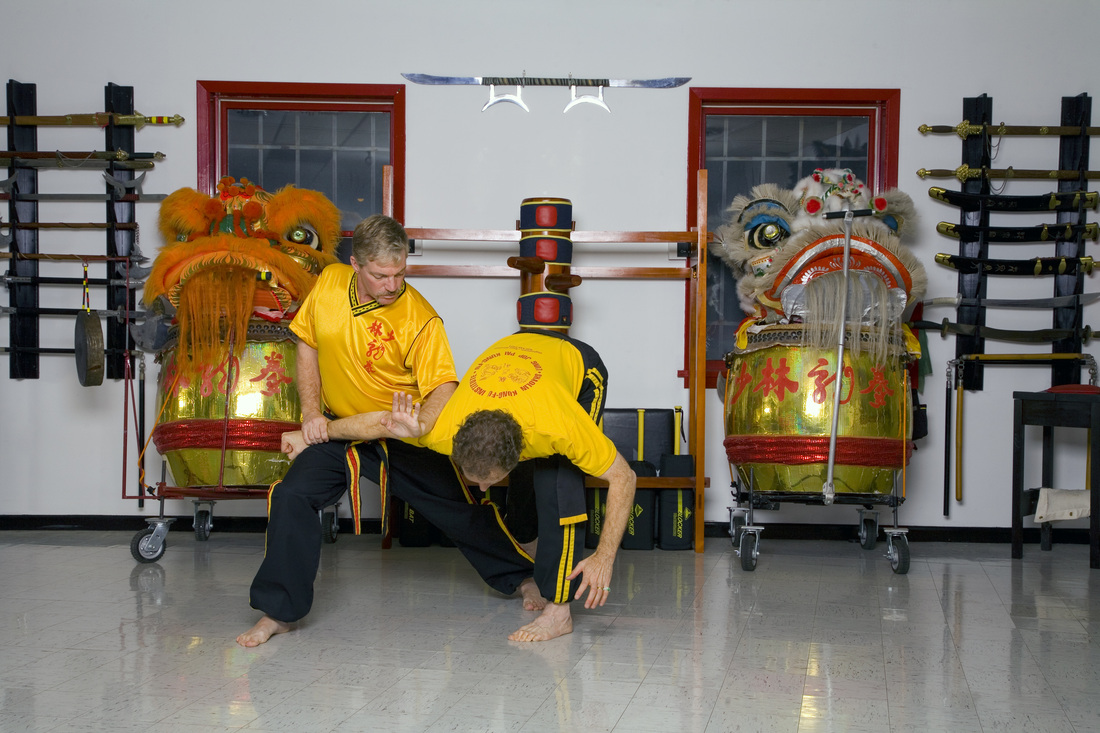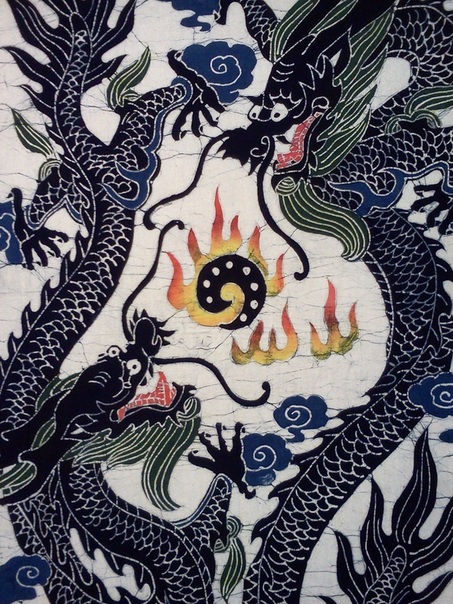
History
The history of Kung fu is filled with many legends. Each style has its own history. To try to convey a comprehensive summary of every Kung fu style would be a monumental task. Traditionally, the Grand Master (Si Tai Gung or Si Tai Poo) would teach the history of the system to each Master (Si Gung or Si Poo) orally. This tradition continues today. Due to this tradition, there is little documented evidence to support a complete history of any Kung fu style. There are many variations of the history, depending upon which Master is consulted. Each variation is correct, from the viewpoint of that Master. Those that did write down the history of their style soon found that the written word was ineffective. To complicate matters, over time, whatever books that did exist may have been lost, burned, or simply worn out.
However, some authoritative documentation did survive the passage of time. The first reliable records of Kung fu were found on the bones of turtle shells of the Shang Dynasty (1622 — 1122 BC). It is the belief of many that Kung fu developed long before this time.
Recently, anthropologists have excavated stone axes, arrow heads, and knifes from China’s Neolithic Period (5000— 1900 BC). It is not difficult to extrapolate from this information that there must have been other fighting techniques that would have included bare hand techniques, hut determining the exact date of when a specific weapon or technique was first used is very difficult. Huang Ti, the third of the Three Autumn Emperors (according to some historians, the first of the Three), used copper swords in combat.
At this time, Kung fu was referred to as Chuan-fa, or “first way.” In Western China, the army of the Chou (Zhou) period defeated the Shang Dynasty ruler in 1122 BC. It was written that during the Chou (Zhou) Dynasty, from 1122 to 221 BC, a kind of wrestling called Jiaoli was used as a military sport along with archery and chariot racing.
Jiaoli may be the same art as Shuai Chiao. which is a throwing art much older than Japanese Judo. Shuai Chiao, like Kung fu, is still practiced today. The martial art of Kung fu has grown and developed over time. From Jiaoli, it may have evolved into what was called Chiaun-yung. This evolution took place during the Spring and Autumn Era, from 770 to 481 BC. Writings of the time indicated that the art began to flourish and gain in popularity and followers (practitioners). However, these writings do not state which martial art style this was.
The history of Kung fu is filled with many legends. Each style has its own history. To try to convey a comprehensive summary of every Kung fu style would be a monumental task. Traditionally, the Grand Master (Si Tai Gung or Si Tai Poo) would teach the history of the system to each Master (Si Gung or Si Poo) orally. This tradition continues today. Due to this tradition, there is little documented evidence to support a complete history of any Kung fu style. There are many variations of the history, depending upon which Master is consulted. Each variation is correct, from the viewpoint of that Master. Those that did write down the history of their style soon found that the written word was ineffective. To complicate matters, over time, whatever books that did exist may have been lost, burned, or simply worn out.
However, some authoritative documentation did survive the passage of time. The first reliable records of Kung fu were found on the bones of turtle shells of the Shang Dynasty (1622 — 1122 BC). It is the belief of many that Kung fu developed long before this time.
Recently, anthropologists have excavated stone axes, arrow heads, and knifes from China’s Neolithic Period (5000— 1900 BC). It is not difficult to extrapolate from this information that there must have been other fighting techniques that would have included bare hand techniques, hut determining the exact date of when a specific weapon or technique was first used is very difficult. Huang Ti, the third of the Three Autumn Emperors (according to some historians, the first of the Three), used copper swords in combat.
At this time, Kung fu was referred to as Chuan-fa, or “first way.” In Western China, the army of the Chou (Zhou) period defeated the Shang Dynasty ruler in 1122 BC. It was written that during the Chou (Zhou) Dynasty, from 1122 to 221 BC, a kind of wrestling called Jiaoli was used as a military sport along with archery and chariot racing.
Jiaoli may be the same art as Shuai Chiao. which is a throwing art much older than Japanese Judo. Shuai Chiao, like Kung fu, is still practiced today. The martial art of Kung fu has grown and developed over time. From Jiaoli, it may have evolved into what was called Chiaun-yung. This evolution took place during the Spring and Autumn Era, from 770 to 481 BC. Writings of the time indicated that the art began to flourish and gain in popularity and followers (practitioners). However, these writings do not state which martial art style this was.
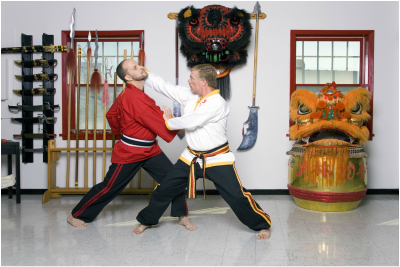 The Four Methods of Kung fu; Strikes Da, Kicks Ti, Joint locks Na, and Throws Shuai.
The Four Methods of Kung fu; Strikes Da, Kicks Ti, Joint locks Na, and Throws Shuai.
The Warring States Period, from 480 to 221 BC, produced many war strategists who stressed the importance of Kung fu training. One, Sun Tzu, stated that “Wrestling and Martial Arts exercises strengthen a warrior’s physique.” Sun Tzu’s ideas were written in a book called “The Art of War.” This book is still used today as required reading by military academies of many nations, including the USA, Russia, and, of course, China.
During this time, Kung fu was called Chi Chi Wu. What is unique about this is that in the Japanese language, the characters for Chi Chi Wu are written as Jujitsu. Jujitsu is the oldest martial art in Japan; its history traces back approximately 2,500 years. During the Warring States Period there were many distinguished masters of Kung fu, including many females. One distinguished female master was Yuenu. She was invited by Emperor Gouijian to explain her theories on swordsmanship.
The Chin Dynasty (Qin Dynasty), from 221 to 206 BC, and the Han Dynasty, from 206 BC to 220 AD, saw the growth of many Martial Arts styles. The styles of Shoubo (which is another term for wrestling) and Go-ti, which was a contest in which participants put horns on their heads and tried to gore each other, flourished at this time. The footwork developed as a defense in these styles is still used in many Kung fu styles of today. Kung fu was called Chi Chiao (also spelled Shuai Chiao), which was a type of wrestling. Wrestling at this time was very different than what you see today in the US; this type had punches and kicks in addition to throws and pins.
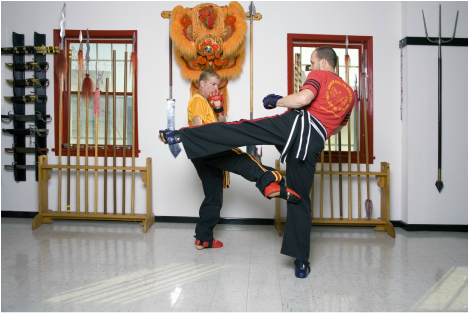 The Second Method; Kicks, Ti.
The Second Method; Kicks, Ti.
The Chi Chiao style was popular in Northern China where the weather was cold and the people wore heavy clothing. In Southern China, where the climate was hot, grabbing was hard due to sweating, and different clothing needs. This climate difference also shows up as differences in movements and other techniques in Kung fu today.
Throughout the course of history, Kung-fü was under many different influences. These influences shaped the philosophy as well as the actual techniques used. During the Chin (Jin) Dynasty, from 265 to 420 (this is different that then Chin (Qin) Dynasty from above, and the Northern and Southern Dynasties, from 420 to 589, Kung-fü was under Buddhist and Taoist influences. For example, Ge Hong, who lived from 284 to 364 was a renowned physician and a Taoist philosopher, integrated Kung fu techniques and breathing exercises, which were called Chi Kung. Chi Kung is still practiced today.
Ge Hong relied on research from his predecessor, Hua To. Hua To was a famous physician who during the Three Kingdom Period, from 220 to 265, created a method of breathing called Wai Chien Shi, which he based upon the movements of five animals. These animals were the bird, deer, bear, monkey and the tiger. It was said that Hua To did this with the help of a priest named Chin Chien.
Throughout the course of history, Kung-fü was under many different influences. These influences shaped the philosophy as well as the actual techniques used. During the Chin (Jin) Dynasty, from 265 to 420 (this is different that then Chin (Qin) Dynasty from above, and the Northern and Southern Dynasties, from 420 to 589, Kung-fü was under Buddhist and Taoist influences. For example, Ge Hong, who lived from 284 to 364 was a renowned physician and a Taoist philosopher, integrated Kung fu techniques and breathing exercises, which were called Chi Kung. Chi Kung is still practiced today.
Ge Hong relied on research from his predecessor, Hua To. Hua To was a famous physician who during the Three Kingdom Period, from 220 to 265, created a method of breathing called Wai Chien Shi, which he based upon the movements of five animals. These animals were the bird, deer, bear, monkey and the tiger. It was said that Hua To did this with the help of a priest named Chin Chien.
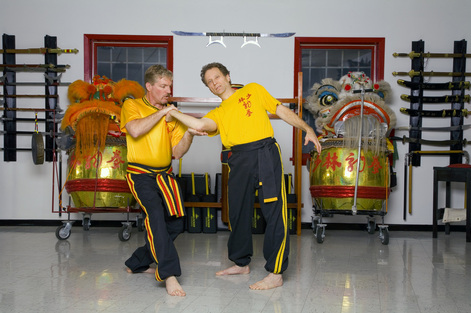 The Third Method; Joint Locks, Na.
The Third Method; Joint Locks, Na.
The work of Hua To and Ge Hong was an important development in the history of Kung fu. This was the first time that internal exercises were practiced in China’s history. However, the first written documentation was not done until 1662 to 1772, during the Kang Hsi period. This was due to the oral tradition, as well as the secretive practice of keeping styles within families.
Hsing I, or Mind Body Boxing, is one of the three main schools of internal KungFu. The others are Tai Chi Chuan and Pa Kua. Hsing I was created by the famous Sung Dynasty General Yueh Fei, who was also the founder of Eagle Claw Kung fu. During this Kang Hsi period, there existed in writing two forms of the Hsing l. One version of Hsing I was in Honan, under Ma Hsueh Li and the other was in Shansi under Tsao Chi Wu.
When Master Kwo Yen Sheng of the Shansi school died, the art broke into three schools in Ilopei. The conservative style was under Li Tsun 1(1850 — 1925). The neutral style was under Wang Hsiang Chai, and the synthetic style under Sun Lu Tang (1859— 1933.) Hsing I was created by the famouns Sung Dynasty General Yueh Fei, who was also the founder of Eagle Claw Kung fu. Though there is no historical documentation to prove it, the first Internal Kung-fti style would be Tai Chi Chuan. According to legend, Tai Chi was created by Chang San Feng of the Yuan Dynasty (1279 — 1368 AD.) Other theories state that it may have been developed during the Tang Dynasty (618 — 907 AD.) Its founder would have been unknown if this is correct.
Hsing I, or Mind Body Boxing, is one of the three main schools of internal KungFu. The others are Tai Chi Chuan and Pa Kua. Hsing I was created by the famous Sung Dynasty General Yueh Fei, who was also the founder of Eagle Claw Kung fu. During this Kang Hsi period, there existed in writing two forms of the Hsing l. One version of Hsing I was in Honan, under Ma Hsueh Li and the other was in Shansi under Tsao Chi Wu.
When Master Kwo Yen Sheng of the Shansi school died, the art broke into three schools in Ilopei. The conservative style was under Li Tsun 1(1850 — 1925). The neutral style was under Wang Hsiang Chai, and the synthetic style under Sun Lu Tang (1859— 1933.) Hsing I was created by the famouns Sung Dynasty General Yueh Fei, who was also the founder of Eagle Claw Kung fu. Though there is no historical documentation to prove it, the first Internal Kung-fti style would be Tai Chi Chuan. According to legend, Tai Chi was created by Chang San Feng of the Yuan Dynasty (1279 — 1368 AD.) Other theories state that it may have been developed during the Tang Dynasty (618 — 907 AD.) Its founder would have been unknown if this is correct.
